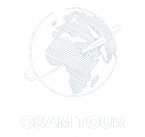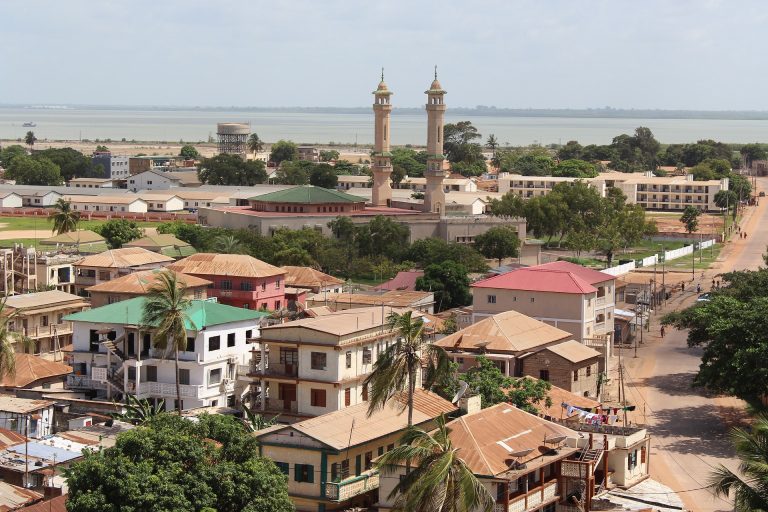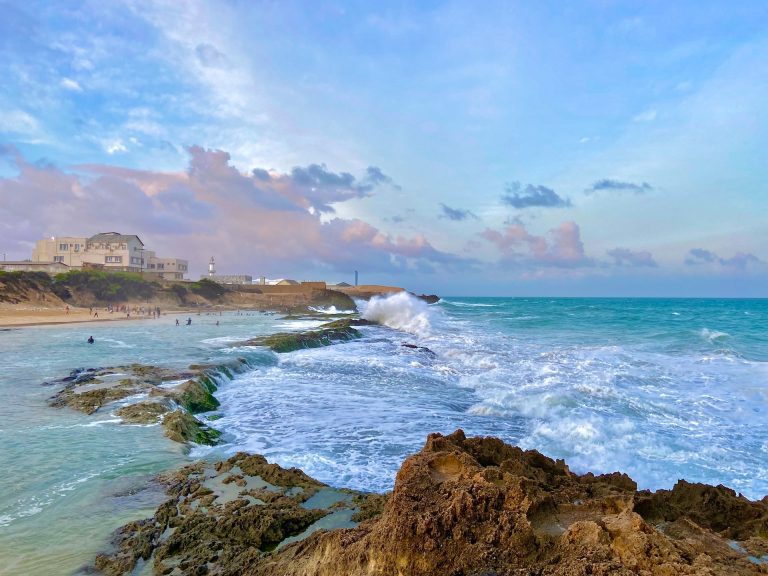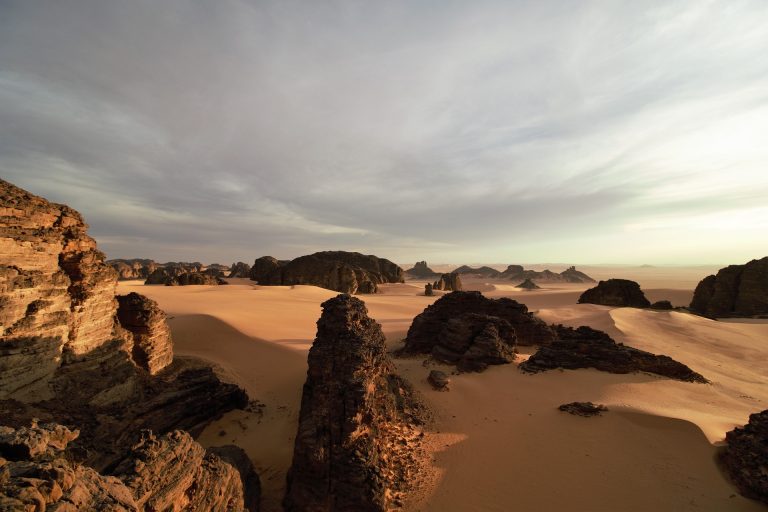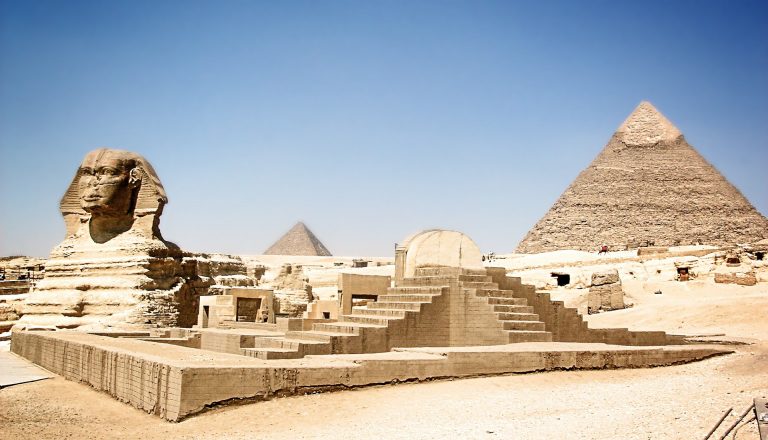ZIMBABWE Travel Guide for 2024: Discover the Inspiration

Welcome to Zimbabwe travel guide. From the majestic Victoria Falls to the captivating historical sites and vibrant cities, this guide is your essential companion. Navigate the intricacies of accommodation, discover money-saving tips, indulge in culinary delights, and uncover unique souvenirs.
What to See and Do in Zimbabwe
Whether you’re an experienced traveler out to explore some of the most famous landmarks in Zimbabwe or someone setting foot here for the first time, there’s never a shortage of things to do or sights to see. Here are the best places to visit in Zimbabwe for first-timers.
- Victoria Falls: Witness the awe-inspiring Victoria Falls, a UNESCO World Heritage site known as the “Smoke that Thunders.” Experience the spray and roar of the falls, and opt for activities like bungee jumping or helicopter rides for a unique perspective.

- Hwange National Park: Embark on a safari adventure in Hwange National Park, renowned for its vast elephant population. Spot a diverse range of wildlife, from lions to giraffes, in their natural habitat.

- Great Zimbabwe Ruins: Explore the ancient stone city of Great Zimbabwe, an archaeological marvel dating back to the 11th century. Discover its intricate architecture and learn about the history of the Shona civilization.

- Matobo National Park: Discover the otherworldly landscape of Matobo National Park, famous for its balancing rock formations. Engage in rhino tracking and explore ancient rock art sites.

- Mana Pools National Park: Immerse yourself in the untouched wilderness of Mana Pools National Park. Enjoy walking safaris, canoeing, and camping by the Zambezi River.

Fast Facts About Zimbabwe
- Climate: Zimbabwe boasts a diverse climate, from tropical to temperate. The dry season, between May and October, offers pleasant weather for safaris and outdoor activities. The wet season, from November to April, brings lush landscapes but might affect some travel plans.
- Local Currency: The Zimbabwean Dollar (ZWL) is the official currency. Currency exchange facilities are available at airports and banks. Credit cards are accepted in major cities and tourist areas.
- Power Voltage: Zimbabwe uses a power voltage of 220-240V with a three-pin plug. Make sure to bring a universal adapter for your electronic devices.
- Language: English is the official language, making communication easier for travelers. Learning a few phrases in local languages like Shona or Ndebele can enhance your interactions.
- Religion: Christianity is the predominant religion in Zimbabwe. While Zimbabwe is generally tolerant, respecting local customs and religious practices is essential.
- Safety: Zimbabwe is relatively safe for tourists, but it’s crucial to stay informed about the local situation and follow any travel advisories. Keep belongings secure and be cautious when exploring unfamiliar areas.
- Cultural Etiquette: Greetings are essential in Zimbabwean culture. A friendly “hello” or “how are you?” shows respect. When visiting villages or homes, seek permission and adhere to local customs.
- Tipping: Tipping is customary in Zimbabwe. Around 10-15% of the bill is appreciated in restaurants, and tipping guides and drivers during safaris is also customary.
When to Visit Zimbabwe: Seasons and Festivals
Here’s a breakdown of the seasons and notable festivals to consider when you plan a trip to Zimbabwe.
Dry Season (April to October)
The dry season is generally considered the best time to visit Zimbabwe for wildlife viewing, as the vegetation is thin and the animals congregate around water sources. This makes it easier to spot them, especially in the national parks such as Hwange, Mana Pools, and Gonarezhou. You can also witness large herds of elephants, buffaloes, zebras, and antelopes, as well as predators such as lions, leopards, cheetahs, and wild dogs.
The dry season is also a good time to visit Victoria Falls, one of the natural wonders of the world. The falls are most spectacular from February to June, when the water flow is at its peak and creates massive clouds of spray. You can also enjoy various activities at the falls, such as bungee jumping, white-water rafting, helicopter rides, and sunset cruises.
The dry season has some drawbacks, however. The temperatures can get very hot in low-altitude areas, reaching above 32°C/90°F in October. The nights and mornings can also get cold, especially in the higher-altitude areas. Moreover, the dry season is the high season for tourism, which means higher rates and more crowds, especially at Victoria Falls.
Wet Season (November to March)
The wet season is the green season in Zimbabwe, as the rains bring life and color to the landscape. The scenery is lush and beautiful, with flowers, fruits, and mushrooms. This is also the best time to visit Zimbabwe for birdwatching, as many birds are in their breeding plumage and migratory birds arrive from other regions. You can see over 600 species of birds in Zimbabwe, including rare and endemic ones. The wet season is also a good time to explore the cultural and historical attractions of Zimbabwe, such as the Great Zimbabwe ruins, the Matobo Hills, and the rock art sites.
The wet season has some advantages, too. It is the low season for tourism. The rains are mostly short afternoon showers and seldom interfere with your safari. The humidity and the heat are also manageable, as the average temperature is around 26°C/80°F.
However, the wet season also has some challenges. The wildlife viewing is more difficult, as the animals are more dispersed and hidden by the thick vegetation. The roads and trails can also become muddy and slippery. Furthermore, from October to December, the flow of the Zambezi River is at its lowest and Victoria Falls is not at its best. You may see only a trickle of water on the Zambian side of the falls, and the views may be obstructed by rocks and islands.
Festivals and Events
Zimbabwe has a rich and diverse cultural calendar, with festivals and events throughout the year. These are some of the highlights that you may want to include in your itinerary:
- Harare International Festival of the Arts (HIFA): This is the biggest and most popular arts festival in Zimbabwe, held annually in late April or early May in the capital city of Harare. The festival showcases local and international talent in various genres, such as music, dance, film, and visual arts.
- Zimbabwe International Film Festival (ZIFF): This is the premier film festival in Zimbabwe, held annually in late August or early September in Harare. The festival celebrates the best of Zimbabwean and African cinema, as well as films from other parts of the world.
- Victoria Falls Carnival: This is the ultimate New Year’s Eve party in Zimbabwe, held annually from December 29 to 31 at Victoria Falls. The carnival attracts thousands of revelers from across the region and beyond, who come to enjoy live music, DJs, fireworks, and fun activities.
- Shoko Festival: This is the biggest and most diverse urban culture festival in Zimbabwe, held annually in late September or early October in Harare and Chitungwiza. The festival showcases the best of Zimbabwean and international hip hop, comedy, spoken word, and digital media.
- Intwasa Arts Festival: This is the leading arts festival in Bulawayo, the second-largest city in Zimbabwe, held annually in late September or early October. The festival celebrates the artistic and cultural diversity of the city and the country, with performances, exhibitions, and workshops in various disciplines.
How to Get Around Zimbabwe
Traveling around Zimbabwe can be challenging, as the country faces fuel shortages, roadblocks, and poorly maintained public transport. Here are some options and tips to help you plan your Zimbabwe trip:
- Car Rental: Renting a car is a convenient and flexible way to explore Zimbabwe at your own pace. You can access remote areas and enjoy scenic drives along the country’s roads. However, you may face difficulties finding fuel, especially in rural areas, and you may encounter frequent roadblocks and checkpoints, where you will need to show your documents and sometimes pay bribes. You will also need to drive on the left side of the road and be careful of potholes, animals, and pedestrians.
If you decide to rent a car, you can choose from several reputable car rental companies in Zimbabwe, such as Avis, Europcar, and Hertz. You can also hire a driver or a guide to accompany you, which can make your trip easier and safer.
- Taxi: Taking a taxi is a quick and easy way to get around the urban centers of Zimbabwe, such as Harare, Bulawayo, and Victoria Falls. You can hail a taxi on the street or call a taxi company. You will need to negotiate the fare before you get in, as most taxis do not have meters. You will also need to pay in cash, preferably in US dollars or local bond notes.
If you want to take a taxi, you can use some of the taxi-hailing apps that operate in Zimbabwe, such as Gtaxi, Vaya, and Hwindi. These apps allow you to request a taxi, see the driver’s picture and details, track your ride, and pay online.
- Bus: Taking a bus is a cheap and popular way to travel between the major cities and towns of Zimbabwe, as well as to some of the neighboring countries, such as South Africa, Botswana, and Zambia. You will need to arrive to a bus station early and secure your seat, as the buses are often overcrowded and oversold.
If you want to take a bus, you can choose from some of the reputable bus companies that operate in Zimbabwe, such as Pathfinder, Intercape, and Greyhound. These companies offer comfortable and reliable buses, with air conditioning, reclining seats, toilets, and entertainment.
Where to Stay in Zimbabwe: Accommodation Tips
Zimbabwe has a wide range of accommodation options to suit every budget and preference. Here are some tips to help you choose the right accommodation for your Zimbabwe trip:
- Hotels: Hotels are the most common and popular type of accommodation in Zimbabwe, especially in the urban centers such as Harare, Bulawayo, and Victoria Falls. Hotels in Zimbabwe cater to different tastes and budgets, from elegant colonial-style hotels to modern business hotels. Some of the best hotels in Zimbabwe include:
The Victoria Falls Hotel: This is the oldest and most iconic hotel in Zimbabwe, dating back to 1904. It is situated in a prime location, overlooking the Victoria Falls Bridge and the Zambezi River.
The Stanley and Livingstone Boutique Hotel: This is a luxury boutique hotel in Victoria Falls, located in a private game reserve, just 15 minutes from the falls.
- Eco-Lodges: Eco-lodges are a great option for travelers who want to experience the natural beauty and wildlife of Zimbabwe, while minimizing their environmental impact and supporting local communities. Eco-lodges are usually located in remote and scenic areas, such as national parks. Some of the best eco-lodges in Zimbabwe include:
The Elephant Camp: This is an eco-friendly luxury tented camp in Victoria Falls, located on a private concession, just 10 minutes from the falls.
The Hide: This is an eco-friendly safari lodge in Hwange National Park, located in a private concession, overlooking a waterhole.
- Guesthouses: Guesthouses in Zimbabwe are suitable for solo travelers, couples, and small groups. Some of the best guesthouses in Zimbabwe include:
Nkosi Guest Lodge: This is a friendly and cozy guesthouse in Victoria Falls, located in a quiet neighborhood, just 2.8 miles from the falls.
Golden Acres Guest Lodge: This is a charming and spacious guesthouse in Kwekwe, located near the Kwekwe Polytechnic College.
You can use booking websites to find suitable accommodation in Zimbabwe: Booking.com, Agoda.com, SafariNow.com (this is a specialized booking website for Africa).
Zimbabwe Travel Guide: Money-Saving Tips
Here are some practical money-saving tips to help you make the most of your budget during your Zimbabwe travel adventure:
- Book in Advance: One of the best ways to save money on your trip to Zimbabwe is to book your flights, accommodation, and tours in advance. This way, you can take advantage of early-bird discounts, special offers, and lower rates. You can also avoid the hassle and stress of finding availability and dealing with price fluctuations.
- Travel Off-Season: Another way to save money on your trip to Zimbabwe is to travel off-season, which is from November to April. This is the wet season in Zimbabwe, which means fewer tourists, lower rates, and more availability.
- Use Public Transport: Public transport is cheap and popular in Zimbabwe, and it can help you get around the urban centers and between the major cities and towns.
- Visit Free Attractions: Zimbabwe has a lot of free attractions that are worth seeing. You can visit the Harare Gardens, the largest and oldest public park in Harare, where you can enjoy the greenery, the flowers, and the sculptures. You can also visit the Victoria Falls Bridge, a historical and engineering landmark that spans the Zambezi River and connects Zimbabwe and Zambia. You can also visit some of the museums that offer free admission, such as the Natural History Museum of Zimbabwe in Bulawayo, the largest and best museum in the country, where you can learn about the flora, fauna, geology, and anthropology of Zimbabwe.
What Food to Try in Zimbabwe: Traditional Cuisine
Zimbabwe is a country with a rich and diverse culinary heritage, influenced by its indigenous, colonial, and neighboring cultures. Here’s a Zimbabwe travel guide to the culinary delights and traditional dishes you must try during your visit:
- Sadza: Sadza is the national dish of Zimbabwe and the most common food in the country. It is a thick porridge made from finely ground maize meal, cooked with water until it forms a dough-like consistency. Sadza is usually eaten with the hands, by breaking off a small piece and rolling it into a ball. It is then dipped into a sauce, stew, or relish, or used to scoop up meat or vegetables.
- Mopane Worms: Mopane worms are not actually worms, but the caterpillars of the emperor moth, which feed on the leaves of the mopane tree. They are considered a delicacy in Zimbabwe, and are harvested in the wild during the rainy season. Mopane worms are prepared by squeezing out their guts, boiling them in salted water, and then drying them in the sun. They can then be fried, roasted, or smoked, and seasoned with salt, pepper, chili, or vinegar. Mopane worms have a crunchy texture and a nutty flavor, and are rich in protein and minerals. They are usually eaten as a snack, or served with sadza and a sauce.
- Nyama: Nyama is the Shona word for meat, and it is a popular and versatile ingredient in Zimbabwean cuisine. Nyama can be prepared in various ways, such as Nyama neMuriwo: a dish of meat and vegetables, usually cooked with onions, tomatoes, and spices, and served with sadza.
- Bota: Bota is a traditional breakfast dish in Zimbabwe, made from maize meal, water, and milk. It is similar to sadza, but thinner and softer in texture. Bota can be flavored with different ingredients, such as peanut butter, jam or honey. Bota is usually eaten with a spoon, and accompanied by tea or coffee.
- Maputi: Maputi are a popular snack in Zimbabwe, made from puffed maize kernels. They are similar to popcorn, but smaller and crunchier. Maputi are made by heating maize kernels in a pot with oil and salt, until they pop and expand. Maputi are usually sold in small packets or paper cones, and can be found in street stalls, shops, and cinemas.
What to Bring from Zimbabwe: Souvenir Ideas
If you are looking for some unique and memorable souvenirs to take home from your Zimbabwe trip, here are some ideas that you may want to consider.
- Handwoven Crafts: Purchase handwoven baskets and textiles crafted by local artisans. These items showcase Zimbabwe’s rich cultural heritage and craftsmanship.
- Stone Sculptures: Invest in stone sculptures, a celebrated form of Zimbabwean art. These unique pieces capture the country’s artistic essence.
- Traditional Jewelry: Acquire traditional jewelry made from beads, shells, and metals. Each piece carries cultural significance and is a tangible memory of your journey.
- Local Coffee: Bring home Zimbabwean coffee beans to enjoy the country’s unique coffee flavors and aroma long after your trip.
- Batik Artworks: Consider purchasing batik artworks that depict scenes from Zimbabwean life. These vibrant and colorful pieces add a touch of Zimbabwean art to your home.
Additionally, check out our article about 2023 top travel destinations in the world.
